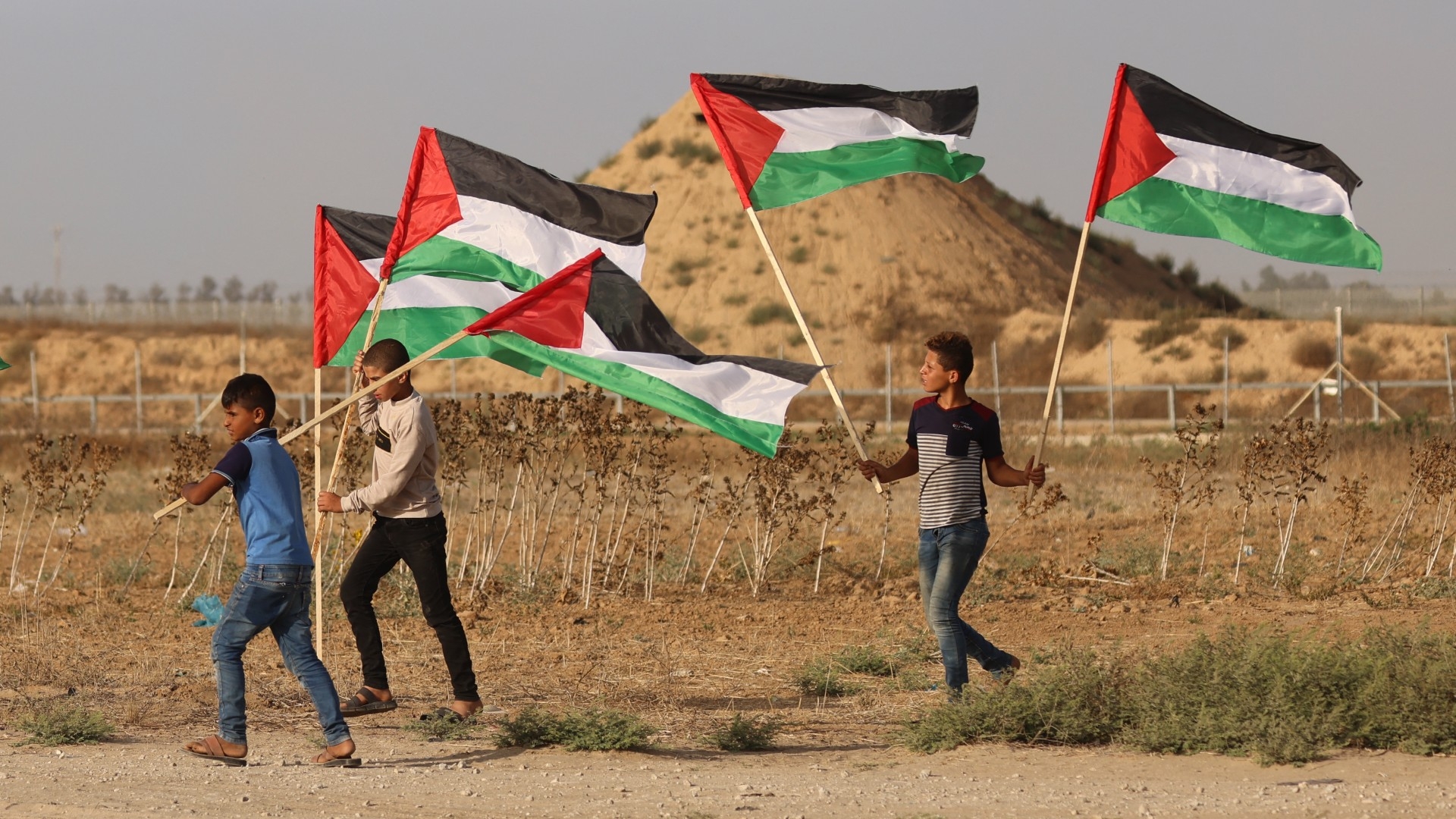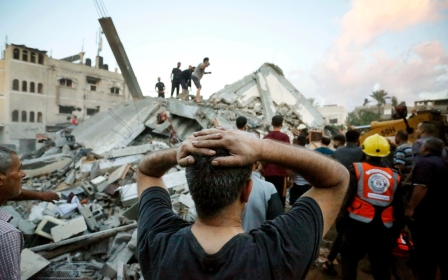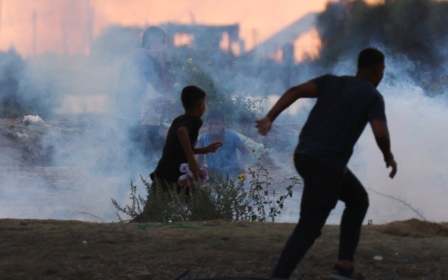Gaza: Everything you need to know about the besieged Palestinian enclave

Palestinian fighters from the besieged Gaza Strip launched an unprecedented assault on Israel on 7 October, firing several rockets into southern and central Israel, while others broke through the barrier fence between Gaza and Israel.
Palestinian fighters were filmed walking on foot in areas such as Sderot, while there were also reports of some using paragliders to enter Israel.
Mohammad Deif, the leader of Hamas's military wing, said the assault was launched in response to Israel's continued aggression on Jerusalem's Al-Aqsa Mosque.
"Every day, the occupation forces raid our villages and towns and cities, all along the West Bank," Deif said.
New MEE newsletter: Jerusalem Dispatch
Sign up to get the latest insights and analysis on Israel-Palestine, alongside Turkey Unpacked and other MEE newsletters
"They [Israeli forces] consistently assault our women, the elderly, children and [the] youth; and prevent our people from praying in the Al-Aqsa Mosque while allowing groups of Jews to desecrate the mosque with daily incursions," he added.
For the past week, thousands of Israeli settlers have been carrying out provocative tours of the mosque complex in Jerusalem following calls by ultranationalist Jewish groups.
"In light of these continuous crimes against our families and our people, and in light of the occupation's destruction, and its disregard for laws and international resolutions, and in light of America and the West's support and international silence, we have decided to put a stop to all of this," Deif said.
Follow Middle East Eye's live coverage for the latest on the Israel-Palestine war
The strength, sophistication and timing of the attack shocked many Israelis, with images of Palestinian fighters bringing captured Israeli soldiers and civilians into Gaza on motorbikes and parading what appeared to be captured Israeli military vehicles through the streets.
However, the assault has also threatened to spiral into a greater conflict.
Israeli Prime Minister Benjamin Netanyhau vowed to inflict an "unprecedented price" on Gaza, with the Israeli army launching devastating air strikes on the besieged strip.
Where is the Gaza Strip?
Gaza was part of historic Palestine prior to the creation of the state of Israel in 1948.
More than 750,000 Palestinians were expelled from historic Palestine in what is known as Al-Nakba, or The Catastrophe.
More than 60 percent of Palestinians in Gaza are refugees, following the expulsion of families in other parts of Palestine in 1948.
Bordered by Israel and Egypt on the Mediterranean coast, the Gaza Strip is an area of about 365 square km, and home to 2.1 million Palestinians, making it one of the most densely populated areas in the world.
What is the recent history of Gaza?
Gaza was captured by Egypt during the 1948 Arab-Israeli War and was under Egyptian control until the 1967 Arab-Israeli war, when the territory was seized and occupied along with the West Bank and East Jerusalem.
In 2005, Israel purportedly pulled out of Gaza and relocated around 8,000 Jewish settlers and Israeli soldiers living in 21 settlements around Gaza to the occupied West Bank.
But in 2007, following the Hamas movement's election victory in Gaza, Israel responded by imposing an air, land and sea blockade of the Gaza Strip.
According to international law, the blockade amounts to an occupation of the strip.
When has Israel recently invaded Gaza?
Since 2008, Israel has launched four invasions on Gaza, in 2008, 2012, 2014 and 2021, which resulted in the deaths of thousands of Palestinians, mostly civilians and many children.
The campaigns resulted in the destruction of homes and offices, damage to pipelines and sewage treatment infrastructure, impacting drinking water and spiking waterborne diseases.
In the last major operation in 2021, at least 260 Palestinians where killed in Gaza while 13 people were killed in Israel.
What's it like living in Gaza?
Israel's blockade systematically excluded Palestinians from services, hospitals, banks and other vital services, leaving the population to exist in fraught living conditions.
The blockade has also resulted in a perennial shortage of clean water, electricity, medical supplies in what is often dubbed the world's largest open-air prison.
Roughly 97 percent of Gaza's drinking water is contaminated, and residents are forced to live with constant power outages due to a power grid that has been heavily damaged in repeated Israeli attacks.
Meanwhile, close to 60 percent of Palestinians live in poverty, and youth unemployment sits at 63 percent.
According to UNRWA, the UN agency that cares for Palestinian refugees, years of conflict and blockade have left 80 percent of Gaza's population dependent on international assistance.
Middle East Eye delivers independent and unrivalled coverage and analysis of the Middle East, North Africa and beyond. To learn more about republishing this content and the associated fees, please fill out this form. More about MEE can be found here.





